
The Mystical Charms of Devil's Bridge
Explore the captivating Devil's Bridge in Antigua, a natural limestone arch with breathtaking ocean views and rich historical significance.
Devil's Bridge, located on the eastern coast of Antigua, is a natural limestone arch carved by the power of the Atlantic Ocean. This geological wonder offers breathtaking views of crashing waves and rugged rock formations. The site is steeped in local folklore, adding a mystical quality to its natural beauty. According to legend, enslaved Africans would leap from the bridge to escape their hardships, believing the area was haunted by spirits. This poignant history adds a layer of depth and respect to the site. Visitors can walk across the bridge and feel the spray of the ocean as it crashes against the rocks below. The surrounding area is part of the Indian Town National Park, offering hiking trails and picnic spots. The park is also home to various bird species, making it a haven for birdwatchers. The natural beauty combined with its historical significance makes Devil's Bridge a must-visit. Prepare to be captivated by the raw power and serene beauty of this unique destination. Whether you are an avid photographer, a history enthusiast, or simply looking to connect with nature, Devil's Bridge promises an unforgettable experience.
Local tips in Devil's Bridge
- Visit early in the morning or late afternoon to avoid the midday heat and have better lighting for photographs.
- Wear sturdy shoes, as the rocks can be slippery and uneven.
- Bring binoculars if you're interested in birdwatching; the park is home to various species.
- Pack a picnic to enjoy in the nearby Indian Town National Park after exploring the bridge.
- Be mindful of the tides and wave conditions for safety reasons.
The Mystical Charms of Devil's Bridge
Devil's Bridge, located on the eastern coast of Antigua, is a natural limestone arch carved by the power of the Atlantic Ocean. This geological wonder offers breathtaking views of crashing waves and rugged rock formations. The site is steeped in local folklore, adding a mystical quality to its natural beauty. According to legend, enslaved Africans would leap from the bridge to escape their hardships, believing the area was haunted by spirits. This poignant history adds a layer of depth and respect to the site. Visitors can walk across the bridge and feel the spray of the ocean as it crashes against the rocks below. The surrounding area is part of the Indian Town National Park, offering hiking trails and picnic spots. The park is also home to various bird species, making it a haven for birdwatchers. The natural beauty combined with its historical significance makes Devil's Bridge a must-visit. Prepare to be captivated by the raw power and serene beauty of this unique destination. Whether you are an avid photographer, a history enthusiast, or simply looking to connect with nature, Devil's Bridge promises an unforgettable experience.
When is the best time to go to Devil's Bridge?
Iconic landmarks you can’t miss
Heritage Quay Complex
Experience the unique blend of shopping, dining, and culture at Heritage Quay Complex in St. John's, Antigua.

Nelson's Dockyard
Discover the historical charm of Nelson's Dockyard in Antigua, a UNESCO World Heritage Site with stunning views and rich maritime history.
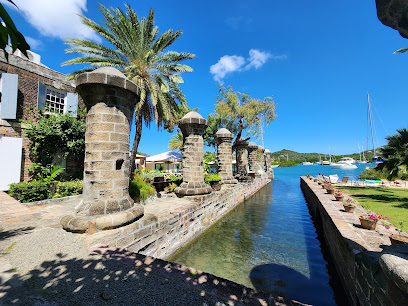
Stingray City Antigua
Experience the thrill of swimming with stingrays in the breathtaking waters of Antigua, a must-visit attraction for nature lovers and adventure seekers.

Redcliffe Quay
Experience the vibrant shopping and cultural hub of Redcliffe Quay in St. John's, Antigua, where local crafts and cuisine come together in a seaside paradise.

Shirley Heights Lookout
Experience stunning views and vibrant culture at Shirley Heights Lookout, the perfect blend of natural beauty and lively atmosphere in English Harbour.

Devil's Bridge National Park
Experience the breathtaking beauty and rich history of Devil's Bridge National Park, a must-see historical landmark in Antigua.

Galleon Beach
Discover the beauty and tranquility of Galleon Beach, a premier public beach destination in Antigua ideal for relaxation and adventure.
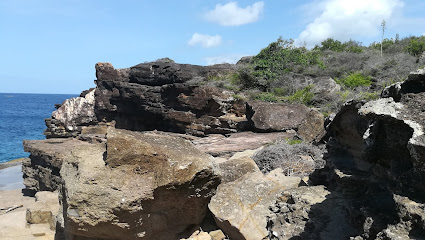
VC Bird Monument
Discover the VC Bird Monument in St. John's, a stunning tribute to Antigua's first Prime Minister, surrounded by beautiful gardens and rich history.

Dickenson Bay Beach
Discover the serene beauty of Dickenson Bay Beach, Antigua's premier destination for sun, sea, and unforgettable memories.

Dow's Hill Interpretation Centre
Discover the breathtaking natural beauty and rich cultural history at the Dow's Hill Interpretation Centre in Piccadilly.

Long Bay Beach
Discover serenity and adventure at Long Bay Beach in Willikies, Antigua—a perfect blend of stunning views, water sports, and local culture.

Half Moon Bay Beach
Half Moon Bay Beach in FreeTown is a picturesque coastal retreat, offering stunning views, soft sands, and delicious Caribbean cuisine for an unforgettable getaway.

Fort James
Explore Fort James: A historic fort in St. John's offering stunning views, rich history, and a beautiful beach, perfect for every tourist.

Betty's Hope Historic Sugar Plantation
Explore the rich heritage of Antigua at Betty's Hope Historic Sugar Plantation, a captivating journey through the island's sugar industry past.

Darkwood Beach
Discover the tranquil beauty of Darkwood Beach in Antigua, where golden sands and crystal-clear waters create the perfect tropical getaway.

Essential places to dine
Ana's On The Beach
Discover culinary delights at Ana's On The Beach in Antigua – where exquisite flavors meet stunning ocean views.

Sheer Rocks
Experience exquisite dining at Sheer Rocks with breathtaking views of Ffryes Beach – a must-visit culinary destination in Antigua.
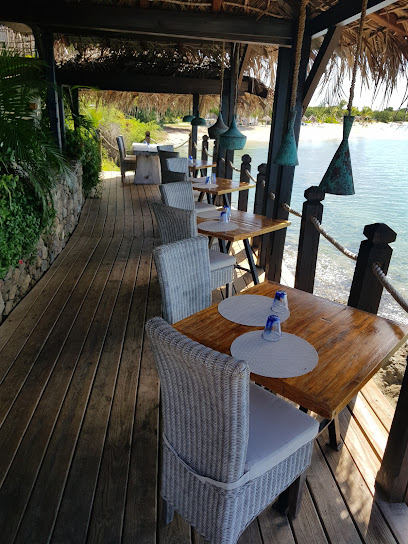
Bay House Restaurant & Bar
Experience family-friendly dining at Bay House Restaurant & Bar in Antigua; savor delicious breakfast and Caribbean flavors in a vibrant atmosphere.

The Nest -Beach Bar, Antigua
Experience Caribbean charm at The Nest Beach Bar in Antigua - where delicious grilled cuisine meets breathtaking ocean views.
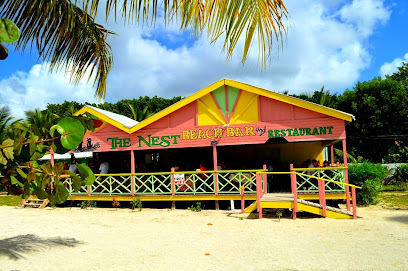
Papa Zouk
Experience fresh Caribbean seafood at Papa Zouk – where every meal is a celebration of flavor and island culture.

Catherines Café
Discover authentic French cuisine at Catherines Café in Piccadilly – where every meal is a delightful journey through France's culinary heritage.

Garden Grill
Experience culinary bliss at Garden Grill - where Caribbean flavors meet exceptional service in a stunning bay-side setting.

OJ's Beach Bar and Restaurant
Experience authentic Caribbean dining at OJ's Beach Bar and Restaurant, where delicious food meets stunning ocean views.

Darkwood Beach Bar and Restaurant
Discover Caribbean flavors at Darkwood Beach Bar and Restaurant with stunning beach views in Antigua.
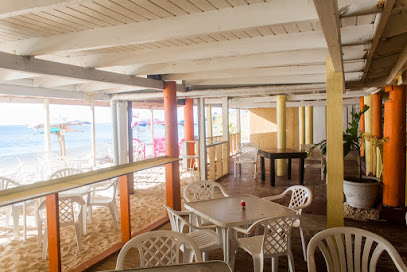
Trappas
Discover the vibrant flavors of Caribbean cuisine at Trappas on Dockyard Drive – an unforgettable dining experience awaits you.

Cloggy's
Discover exquisite dining at Cloggy's in Falmouth's Catamaran Marina - where local flavors meet stunning waterfront views.

Turner's Beach
Discover Turner's Beach: A seaside restaurant serving exquisite local dishes and breathtaking views in St. John's.

Miracles of the Caribbean Restaurant and Bar
Discover authentic Caribbean flavors at Miracles of the Caribbean Restaurant and Bar in Bolands—where every dish tells a story.

Flatties Flame Grill
Discover authentic Caribbean flavors at Flatties Flame Grill in English Harbour – where every meal tells a story.

Abracadabra
Experience the best of Italian cuisine fused with lively nightlife at Abracadabra in English Harbour.

Markets, malls and hidden boutiques
Devil's Bridge National Park
Discover the breathtaking views and rich history at Devil's Bridge National Park, a stunning natural landmark in Antigua.

Tropical Time Out Ice Cream Parlour & Deli
Discover the sweet flavors of the Caribbean at Tropical Time Out Ice Cream Parlour & Deli in Willikies, where ice cream dreams come true.

Muffy's Eastside Grocery
Explore Muffy's Eastside Grocery in Willikies – your local stop for fresh produce and essential goods while enjoying the Caribbean vibe.

Zemi Art Gallery
Explore Zemi Art Gallery in St. John's, Antigua, where local artistry comes to life through unique handmade gifts and vibrant cultural expressions.

Exotic Antigua
Discover unique clothing at Exotic Antigua, where local culture meets vibrant fashion in the heart of St. John's.

The Posh Pirate Antique Store
Explore a treasure trove of antiques at The Posh Pirate Antique Store in Liberta, where history meets charm in the heart of Antigua.

BALLOON OCCASIONS Decorating Service And Party Store
Explore Balloon Occasions in Antigua for a vibrant selection of party supplies and decorations to make your celebrations unforgettable!

BOSSY MINI MART
Discover the convenience of BOSSY MINI MART, your go-to grocery store for local flavors and travel essentials in the heart of Antigua.

The Cotton House
Discover unique Caribbean fashion at The Cotton House in Piccadilly, where local craftsmanship meets style and comfort.

Britt Shop Aeropuerto Antigua
Explore a vibrant selection of gifts, chocolates, and souvenirs at Britt Shop Aeropuerto Antigua, your gateway to unforgettable memories.

Bold Fashion Boutique
Explore Bold Fashion Boutique in English Harbour for unique clothing, accessories, and a taste of Caribbean style that elevates your wardrobe.

Photofantasy Antigua
Explore Photofantasy Antigua for unique souvenirs and local crafts that capture the essence of this beautiful Caribbean island.

Rae-el Collection
Explore Rae-el Collection in St. Paul's, the perfect stationery store for unique gifts and creative supplies to inspire your artistic journey.

Mahi's Creations
Discover Mahi's Creations, the premier bakery in Willikies, Antigua, where every bite is a taste of island paradise with freshly baked sweets and local flavors.

Seahorse Studios
Discover unique custom t-shirts at Seahorse Studios in Falmouth, where creativity meets quality for unforgettable souvenirs.

Essential bars & hidden hideouts
The Nest -Beach Bar, Antigua
Experience the ultimate beachside dining at The Nest Beach Bar in Antigua, where delicious grill cuisine meets stunning ocean views.

Beach Bum Bar & Cafe
Discover the ultimate tropical escape at Beach Bum Bar & Cafe, where flavor meets relaxation in the heart of FreeTown.

Kon Tiki Bar and Grill
Indulge in delicious Caribbean cuisine at Kon Tiki Bar and Grill, where vibrant flavors meet a lively atmosphere in St John's.

Loose Cannon Beach Bar
Experience the best of Caribbean dining and beachside relaxation at Loose Cannon Beach Bar in beautiful English Harbour.

Skullduggery's Cafe
Experience the vibrant atmosphere and delightful beverages at Skullduggery's Cafe in Piccadilly, a perfect stop for tourists seeking local charm.

Garrot Blacks Bar & Lounge
Experience the vibrant nightlife of English Harbour at Garrot Blacks Bar & Lounge, where cocktails and camaraderie come together in a stunning setting.

ROSA BAR
Experience the lively spirit of the Caribbean at Rosa Bar in Piggotts, where refreshing drinks and local flavors await you.

CHRISTIAN SUNSHINE BAR
Discover the vibrant nightlife and warm hospitality at Christian Sunshine Bar in Piggotts, where great drinks and good times await.

Man Cave Bar & Restaurant
Discover the vibrant Man Cave Bar & Restaurant in Saint John's, Antigua, where delicious grill dishes and a lively atmosphere await you.
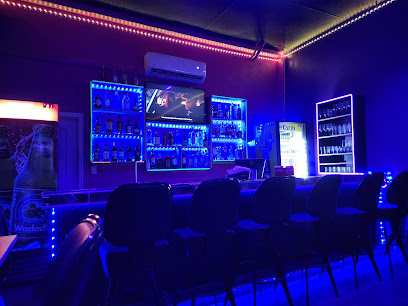
Kennedy's Classic Bar & Deli
Experience the lively atmosphere and delectable flavors at Kennedy's Classic Bar & Deli in the heart of St. John's, Antigua.

Stables Bar
Experience the vibrant atmosphere of Stables Bar in Cassada Gardens, where delicious drinks and local culture come alive in a beautiful setting.

The Locos Enterprise
Experience the vibrant nightlife at The Locos Enterprise, a lively bar in Willikies offering delicious cocktails and local charm.

SIDEVIEW BAR & GRILL
Experience the vibrant nightlife of All Saints at Sideview Bar & Grill, where cocktails, local flavors, and stunning views come together.

ROSEENS BAR
Experience the vibrant atmosphere and exquisite drinks at Roseens Bar in Liberta, a must-visit for every traveler seeking local charm.

CUCHIYA BAR
Discover the lively atmosphere and refreshing drinks at Cuchiya Bar, a local favorite in Piggotts, perfect for an unforgettable night out.

Local Phrases about Devil's Bridge
-
- HelloWadadli
[wah-dahd-lee] - GoodbyeLeh we meet again
[lay we meet again] - YesYes
[yes] - NoNo
[no] - Please/You're welcomePlees
[plees] - Thank youTank yu
[tank you] - Excuse me/SorryPardon me
[pah-dun me] - How are you?How yu stay?
[how you stay?] - Fine. And you?Irie. An yu?
[eye-ree. an you?] - Do you speak English?Yu speak English?
[you speak English?] - I don't understandMe nah comprehend
[meh nah kum-preh-end]
- HelloWadadli
-
- I'd like to see the menu, pleaseMi wah see di menu, please
[mee wah see dee menu, please] - I don't eat meatMi nuh eat meat
[mee nuh eat meat] - Cheers!Cheers!
[cheers] - I would like to pay, pleaseMi wah pay, please
[mee wah pay, please]
- I'd like to see the menu, pleaseMi wah see di menu, please
-
- Help!Help!
[help!] - Go away!Go weh!
[go way!] - Call the Police!Call di Police!
[call dee Police!] - Call a doctor!Call a docta!
[call ah docta!] - I'm lostMi lost
[mee lost] - I'm illMi sick
[mee sick]
- Help!Help!
-
- I'd like to buy...Mi wah buy...
[mee wah buy...] - I'm just lookingMi jus a luk
[mee jus ah look] - How much is it?A wah price?
[ah wah price?] - That's too expensiveDat too much
[dat too much] - Can you lower the price?Yu cud drop di price?
[you could drop dee price?]
- I'd like to buy...Mi wah buy...
-
- What time is it?A wah time it be?
[ah wah time it bee?] - It's one o'clockIt one o'clock
[it one o'clock] - Half past (10)Half past (10)
[Half past (10)] - MorningMawnin
[mawnin] - AfternoonAftanoon
[aftah-noon] - EveningEvenin
[evenin] - YesterdayYestadeh
[yes-tah-deh] - TodayToday
[today] - TomorrowTommarow
[tom-ah-row] - 1One
[wun] - 2Two
[too] - 3Tree
[tree] - 4Fo'
[foh] - 5Fi'
[fie] - 6Six
[siks] - 7Seven
[sev-en] - 8Eight
[ate] - 9Nine
[nine] - 10Ten
[ten]
- What time is it?A wah time it be?
-
- Where's a/the...?Wey di...
[wey dee...] - What's the address?Wah di address?
[wah dee address?] - Can you show me (on the map)?Yu cud show me (pan di map)?
[you could show me (pan dee map)?] - When's the next (bus)?Wen di nex (bus)?
[wen dee nex (bus)?] - A ticket (to ....)A ticket (to ....)
[A ticket (to ....)]
- Where's a/the...?Wey di...
History of Devil's Bridge
-
Devil's Bridge is a natural rock arch located on the northeastern coast of Antigua, within the Indian Town National Park. The site is renowned for its rugged beauty, powerful waves, and historical significance. The bridge itself was formed through centuries of erosion caused by the Atlantic Ocean's relentless waves, creating a spectacular natural wonder that has captivated visitors for generations.
-
The formation of Devil's Bridge is primarily attributed to the natural processes of marine erosion. Over millions of years, the constant battering of the Atlantic waves against the limestone coastline gradually carved out the arch, leaving behind the iconic structure we see today. The bridge spans approximately 15 feet, with the surrounding area dotted with blowholes and geysers that add to the dramatic landscape.
-
Before the arrival of European settlers, the area around Devil's Bridge was inhabited by the indigenous Arawak people. While there is limited archaeological evidence directly associated with Devil's Bridge, the broader region was known to be a significant site for the Arawaks, who were the island's first known inhabitants. They relied on the sea for sustenance and would have been well-acquainted with the natural landmarks of the area.
-
During the colonial era, Devil's Bridge gained a darker reputation. The site became associated with the tragic history of enslaved Africans brought to Antigua by European colonizers. According to local lore, many enslaved people, unable to bear the harsh conditions and brutal treatment, took their own lives by leaping into the turbulent waters below the bridge. This tragic chapter has imbued the site with a somber historical significance.
-
Devil's Bridge holds a profound place in Antiguan culture and collective memory. It serves as a poignant reminder of the island's colonial past and the suffering endured by enslaved Africans. The bridge is often visited during cultural and historical tours, and it stands as a symbol of resilience and remembrance for the local community. Various oral histories and legends have grown around the site, further enriching its cultural tapestry.
-
Today, Devil's Bridge is a protected area within the Indian Town National Park. Efforts have been made to preserve the natural and historical integrity of the site, ensuring that it remains a place of reflection and education for future generations. The park offers guided tours that provide insights into the geological, historical, and cultural significance of Devil's Bridge, making it a must-visit destination for history enthusiasts and nature lovers alike.
Devil's Bridge Essentials
-
Devil's Bridge is located on the eastern coast of Antigua, within the Indian Town National Park. The nearest major airport is V.C. Bird International Airport (ANU), which is about a 40-minute drive away. From the airport, you can rent a car, hire a taxi, or arrange for a private transfer to reach Devil's Bridge. Public buses also operate from St. John's, the capital, to various points near the park, but the schedules can be irregular.
-
While renting a car is the most convenient way to explore the area, taxis are also readily available and can be arranged for tours. Public buses are an option, but they may not stop directly at Devil's Bridge, requiring some walking. For a more immersive experience, consider joining a guided tour that includes transportation.
-
The official currency is the Eastern Caribbean Dollar (XCD), though US Dollars are widely accepted. Credit cards are commonly accepted in hotels, restaurants, and larger shops, but it's advisable to carry some cash for smaller vendors and in more rural areas. ATMs are available in St. John's and other major towns.
-
Devil's Bridge and its surrounding areas are generally safe for tourists. However, petty crime can occur, so it's wise to keep an eye on your belongings and avoid walking alone at night in secluded areas. Stick to well-traveled routes and avoid displaying valuable items.
-
In case of an emergency, dial 911 for immediate assistance. There are medical facilities in nearby towns such as St. John's and Willikies. Always carry travel insurance that covers medical emergencies. Local pharmacies are available for minor health issues.
-
Fashion: Do wear comfortable clothing and sturdy shoes, as the terrain can be rocky. Avoid wearing high heels or flip-flops. Religion: Do respect local customs and traditions, though the area is not particularly religious. Public Transport: Do be patient, as public transport can be less reliable. Greetings: Do greet locals with a friendly 'hello' or 'good day.' Eating & Drinking: Do try local foods and beverages. Don't litter; always dispose of trash responsibly.
-
To experience Devil's Bridge like a local, visit early in the morning to avoid the crowds and enjoy the natural beauty in peace. Bring a picnic and enjoy it at one of the scenic spots. Engage with local vendors and artisans who may be selling handmade crafts and souvenirs.
Trending Landmarks in Devil's Bridge
-
Heritage Quay Complex
-
Nelson's Dockyard
-
Stingray City Antigua
-
Redcliffe Quay
-
Shirley Heights Lookout
-
Devil's Bridge National Park
-
Galleon Beach
-
VC Bird Monument
-
Dickenson Bay Beach
-
Dow's Hill Interpretation Centre
-
Long Bay Beach
-
Half Moon Bay Beach
-
Fort James
-
Betty's Hope Historic Sugar Plantation
-
Darkwood Beach
Nearby Cities to Devil's Bridge
-
Things To Do in Freetown
-
Things To Do in All Saints
-
Things To Do in Liberta
-
Things To Do in English Harbour
-
Things To Do in Falmouth
-
Things To Do in St. John's
-
Things To Do in Dickenson Bay
-
Things To Do in Bolands
-
Things To Do in Jolly Harbour
-
Things To Do in Woodlands
-
Things To Do in Gingerland
-
Things To Do in Newcastle
-
Things To Do in Cotton Ground
-
Things To Do in Charlestown
-
Things To Do in Basseterre








